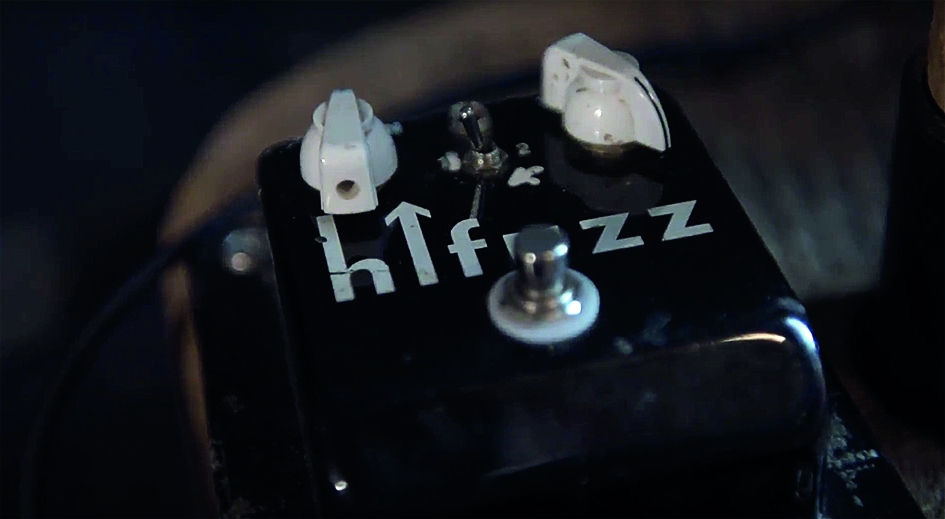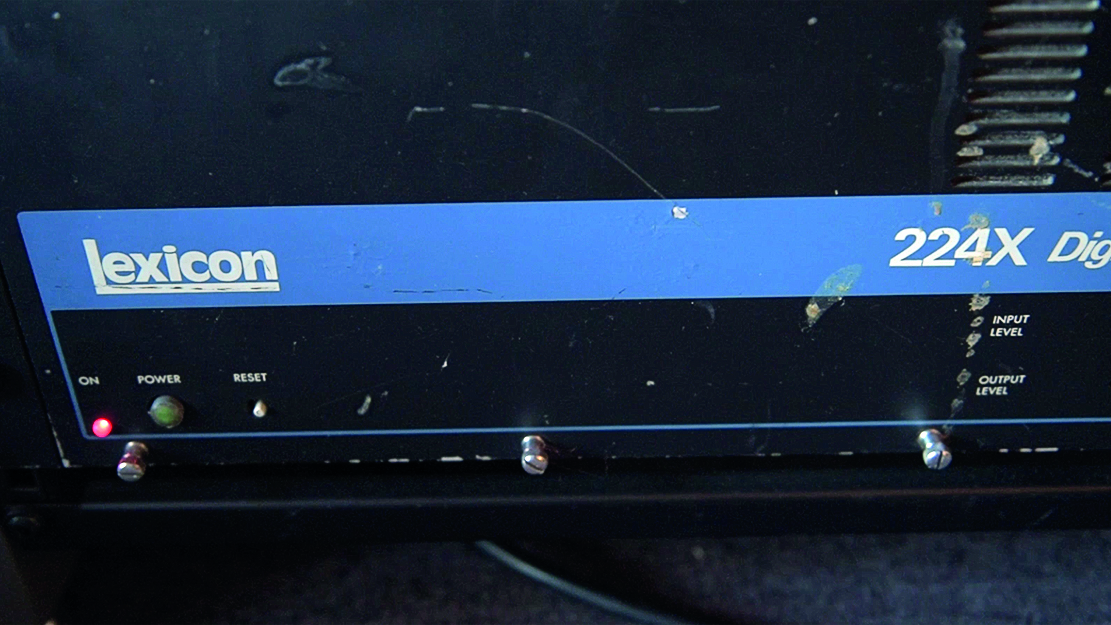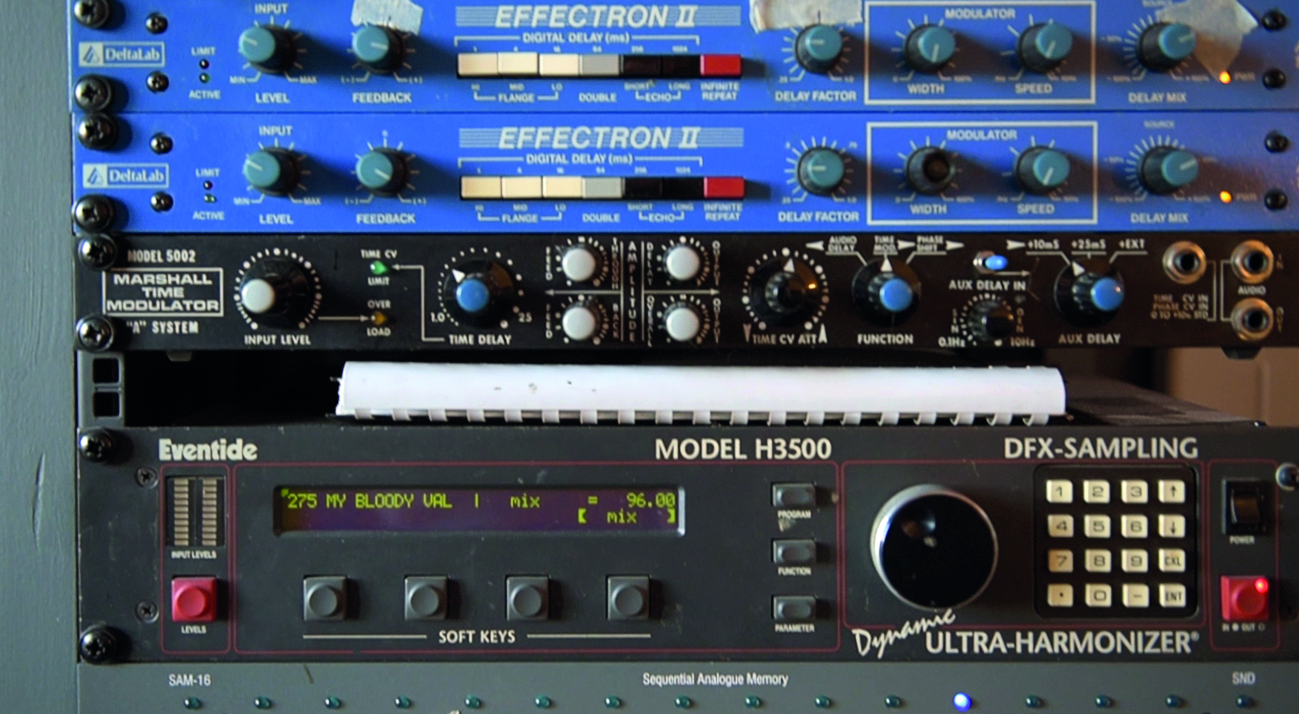The Breakdown: Richard Fearless shows us around his "Metal Box", a studio inside a shipping container
The Death in Vegas founder also demonstrates how he made a key element of Our Acid House, a track from his latest record
Richard Fearless has been releasing electronic music since the mid-’90s, but for most of that time he’s been best known for his collaboration-heavy, genre-hopping project Death In Vegas.
Following an initial string of white labels, he released his first album under the name Richard Fearless in 2019. Decidedly more machine-focused, that album – Deep Rave Memory – saw the producer stripping his sound back to its rawest elements, combining ambient washes of analogue synth with swirling delay lines, acid-techno bass riffs and cavernous drums.
Last month Richard Fearless returned with a companion album, Future Rave Memory. Produced once again in his Thames-side Metal Box studio, and created with the same array of analogue hardware, this latest LP sees Fearless stripping away the ‘club’ elements of its predecessor and focussing on the ambient elements of his sound.
The result is a mesmerising instrumental album that draws emotive inspiration from the past year of pandemic and the death of close friend Andrew Weatherall. For the second edition of our new video series The Breakdown, we met up with Richard in London to find out more, check out his studio and get a deeper insight into how he makes music.
How do you consider what you do as Richard Fearless as different to Death In Vegas?
“That’s an interesting question. I am the same person and I’ve pretty much used the same equipment for the last 25 years – apart from a bit of outboard gear – but certainly with Death in Vegas I try and flip a switch in my head a bit.
“With Richard Fearless, originally it was just something that I would put out on white labels. What I wanted was to come into the studio and get everything ready, all my drum machines and synths, and do everything in one take. That was the rough idea with Richard Fearless – being a lot more instinctive and visceral. Not putting too much thought in. Going with the initial instinct and putting down jams.
Want all the hottest music and gear news, reviews, deals, features and more, direct to your inbox? Sign up here.
It’s taken me 30 years to get to this point. Honestly, I’ve only really liked the last few records I’ve done
“That way of working became so appealing to me that I decided that was how I wanted to work all of the time. The only thing I’ve done differently from there is adding a live console, which has added even more of a performance element when putting the mixes down.
“It’s taken me 30 years to get to this point. Honestly, I’ve only really liked the last few records I’ve done. It’s taken me that long to hone my skills and have confidence in my work. I think not being a straight-up musician throws a spanner in the works.”
Are you mostly a ‘sequencer’-type producer, then?
“Definitely, because I can kind of take my time with it. Most things start with a sequencer. As I’ve said, I’ve had this equipment since the Contino Sessions but it’s only been since being here in Metal Box that I’ve had everything running live.”
And you purposefully set it up so that you have access to everything?
“I spent some time thinking about how I was going to do it. I ended up going down this route of using the ACME-4. That’s the sync box for everything. At first it was hard getting things to lock in, but the ACME really helped.
I was lucky that I could channel everything with this record. It became this cathartic thing, my own way of dealing with how I feel currently
“It’s made by SND who also made my SAM-16 sequencer. They’re both made by the same guy, Sebastian. I think Florian Schneider was involved with that company too. He built a lot of stuff for Kraftwerk.
“I can get a sequence for any synth – for example, the Juno is currently linked to the SAM-16 – change the timing of it, put individual swing onto each thing. It’s a really organic way of working and it’s a really great system.”
Tell us about your two recent albums – Deep Rave Memory and Future Rave Memory. What’s the relationship between those two?
“After years of Death in Vegas, what with that having such a history and so many collaborations, I felt it was important to do something that was more reflective of me as a DJ and artist. But while I was doing it I was putting down some ambient mixes and ended up thinking ‘man this works really well’, I could carry this over onto other sounds and thought ‘OK, there’s another record in here’.
“Then with the shit we’ve all gone through, I wasn’t able to go into the studio as much because I was needed at home. It was actually kind of nice to come in less. I valued it more. It’s become kind of a healing place to be. I was lucky that I could channel everything with this record. It became this cathartic thing, my own way of dealing with how I feel currently.”
Tell us about your two recent albums – Deep Rave Memory and Future Rave Memory. What’s the relationship between those two?
“After years of Death in Vegas, what with that having such a history and so many collaborations, I felt it was important to do something that was more reflective of me as a DJ and artist. But while I was doing it I was putting down some ambient mixes and ended up thinking ‘man this works really well’, I could carry this over onto other sounds and thought ‘OK, there’s another record in here’.
“Then with the shit we’ve all gone through, I wasn’t able to go into the studio as much because I was needed at home. It was actually kind of nice to come in less. I valued it more. It’s become kind of a healing place to be. I was lucky that I could channel everything with this record. It became this cathartic thing, my own way of dealing with how I feel currently.”
How much of the album existed pre-lockdown?
“Some tracks are reworkings of tracks on Deep Rave Memory. I wanted to be another version of it – a Future Rave Memory of the Deep Rave Memory. I didn’t want to do that just by taking the drums out. I wanted to keep pushing the songs until I was in a happy place with them.
There’s a lot of dialogue about ambient music and artists where people say it’s super easy to do. On some level it definitely is, but what isn’t easy to do is keep someone’s attention for 15 minutes
“The last track on that album Our Acid House was actually written on the day that I found out Andrew Weatherall had died. Dan [Daniel Avery – who works in the next door studio] and I were both working that day and Dan did a piece unbeknownst to me. We both used to have studios around where Andrew was and we were close to him. It floored us.”
Do you find it harder to work on ambient, beatless tracks?
“There’s a lot of dialogue about ambient music and artists where people say it’s super easy to do. On some level it definitely is, but what isn’t easy to do is keep someone’s attention for 15 minutes. That, to me, means there needs to be narration in the song; every sound and effect part needs to work around what’s already been put down.
“That level of depth isn’t easy to do. My biggest fear is that people say ‘it’s good but fuck me, it goes on a bit’. There has to be a journey in each song, and definitely throughout the album.”
How Richard Fearless made the feedback loops from Our Acid House
Our Acid House is the emotive final track of the album, inspired by the death of Andrew Weatherall. Richard also wanted to create a transitional ending. “I knew I was going straight into recording a Death In Vegas album after this, so I wanted something that felt like passing the baton from one project to the other.” He achieved this by creating an epic build of heavily processed feedback.

It starts with a pad-like sound from Roland Juno. “The actual sound started as a synth line. I reamped it through my [Vox] AC30. I used two Neumanns to stereo mic the amp,” Richard explains. “I think I used a Hiwatt Fuzz pedal and the Sansamp. The great thing about those pedals is that you can get a bit more control over the distortion.”

Richard then layers up the distorted feedback with a second, modulated version. “I have a tremolo version on top of the feedback. That tremolo was done in the box. It’s then going to the Effectron and Lexicon.”

Richard then processes it further still. “You can hear the Marshall Time Modulator, bringing that metallic element to the sound.” By adding multiple layers and reprocessing, Richard builds a My Bloody Valentine-like wall of noise. “It’s just a case of reprocessing again and again and building up and up.”
Richard Fearless' new album Future Rave Memory is out now on Drone.


Future Music is the number one magazine for today's producers. Packed with technique and technology we'll help you make great new music. All-access artist interviews, in-depth gear reviews, essential production tutorials and much more. Every marvellous monthly edition features reliable reviews of the latest and greatest hardware and software technology and techniques, unparalleled advice, in-depth interviews, sensational free samples and so much more to improve the experience and outcome of your music-making.
